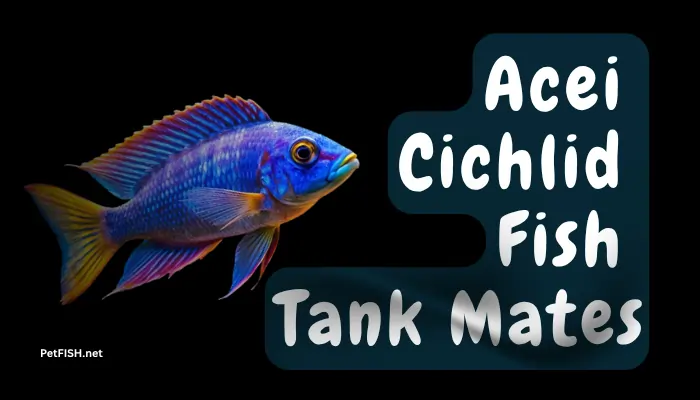The Acei Cichlid, also known as the Pseudotropheus Acei, is a vibrant and popular freshwater fish native to Lake Malawi in Africa.
Known for their stunning blue and yellow coloration, these cichlids thrive in well-maintained aquariums. However, selecting the right tank mates for Acei Cichlids is crucial for creating a harmonious environment.
This article will explore suitable companions for these cichlids, ensuring that both the Acei and their tank mates can coexist peacefully while minimizing stress and aggression, which is essential for the overall health of the aquarium ecosystem.
Choosing appropriate tank mates for Acei Cichlids involves understanding their behavior, size, and habitat needs.
Acei Cichlids are generally peaceful compared to other cichlid species, but they can display territorial behavior, especially during breeding. Therefore, it is important to select fish that can tolerate their temperament and thrive in similar water conditions.
This article will provide insights into the best tank mates, how to introduce them, and tips for maintaining a balanced aquarium. By carefully selecting tank mates, you can create a vibrant community that showcases the beauty of Acei Cichlids and their companions.
In this article:
- Compatible Tank Mates
- Understanding Acei Cichlids
- Ideal Tank Conditions
- Fish to Avoid
- Introducing New Fish
- Maintaining a Harmonious Tank
- Conclusion
Compatible Tank Mates
When selecting tank mates for Acei Cichlids, consider other African cichlids that share similar water conditions and temperaments.
Suitable companions include species like the Yellow Lab (Labidochromis caeruleus), Rusty Cichlid (Iodotropheus sprengerae), and the Demasoni Cichlid (Pseudotropheus demasoni).
These fish can thrive alongside Acei Cichlids without overwhelming them. Additionally, some peaceful community fish such as Tetras or Rainbowfish can be compatible, provided they are not too small or overly aggressive.
- Electric Yellow Cichlids (Yellow Labs) – Peaceful, colorful, and great match in size and behavior.
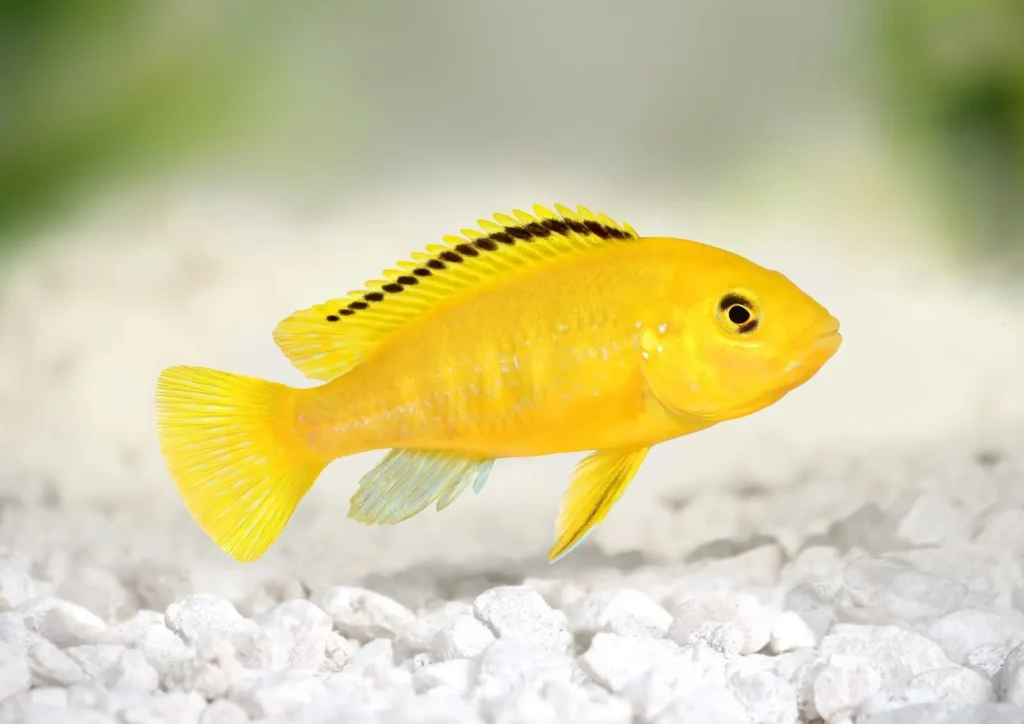
- Peacock Cichlids – Calm and compatible with similar water needs.
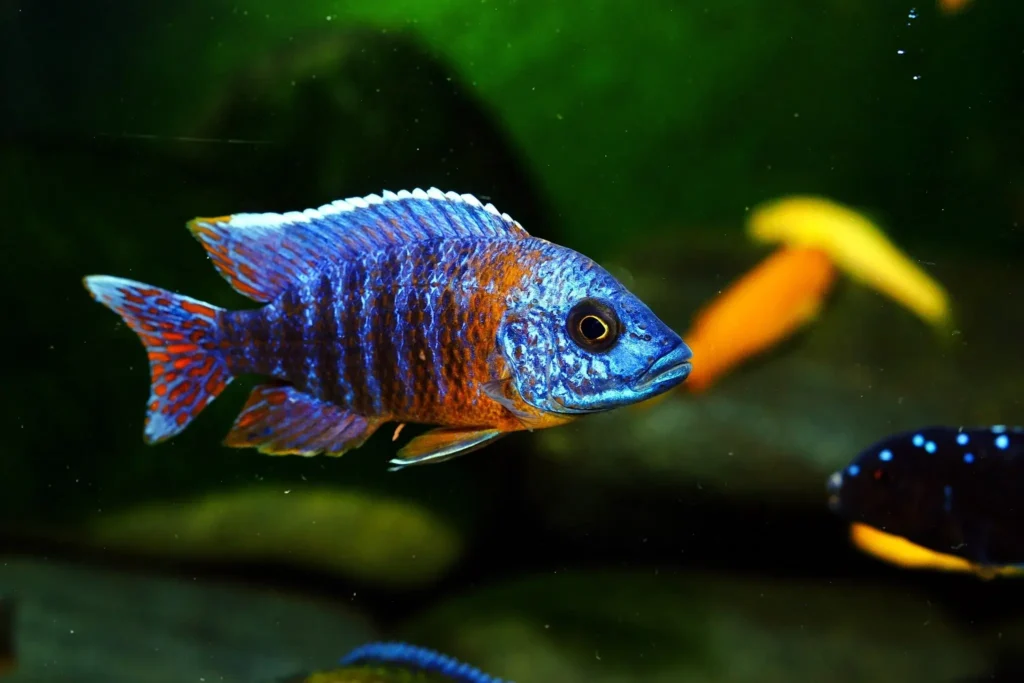
- Rusty Cichlids – Peaceful Mbuna that blend well with Aceis.
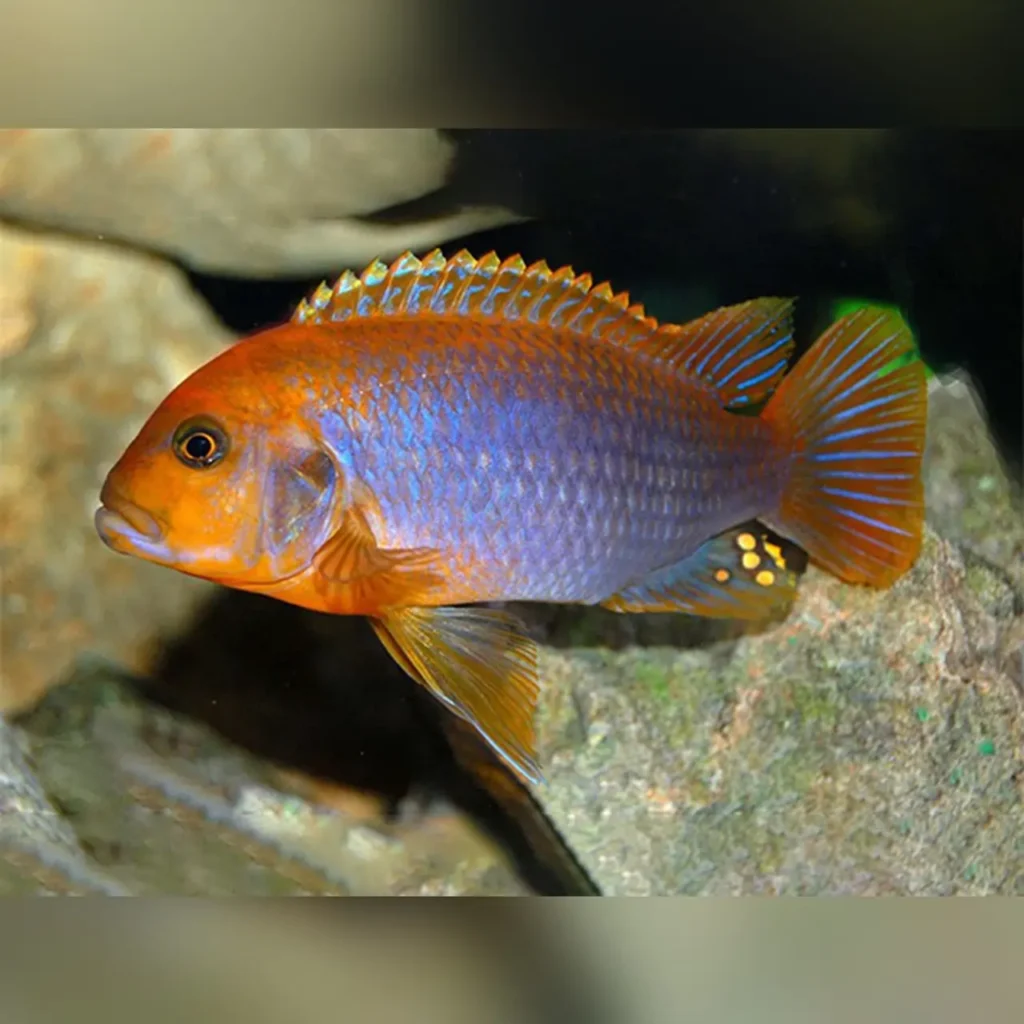
- Other Acei Cichlids – They thrive in groups of 5 or more!
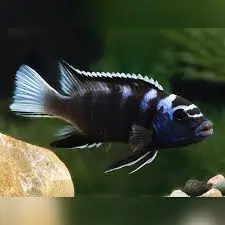
- Synodontis Catfish – Fast, bottom-dwelling fish that don’t compete.
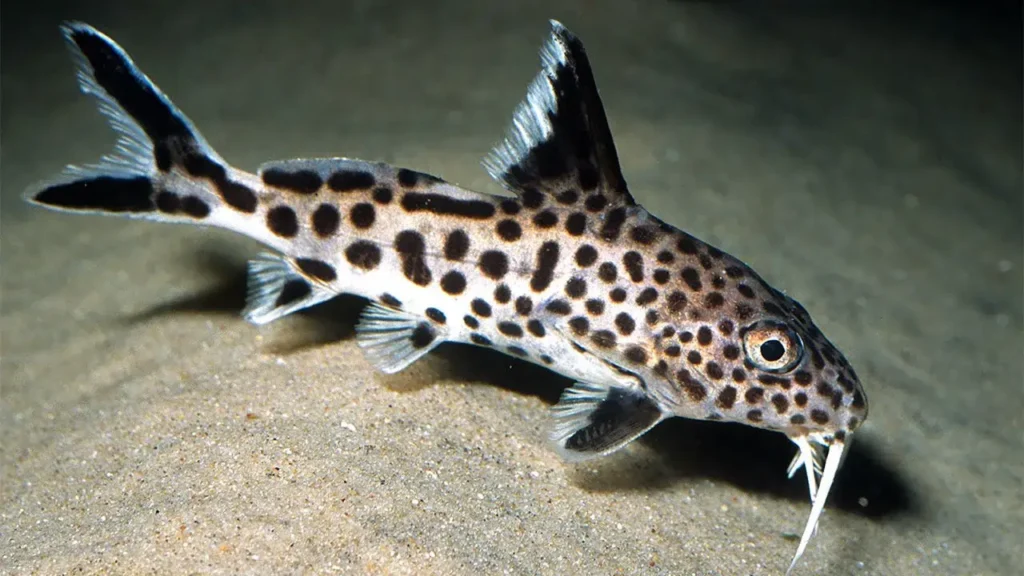
- Bristlenose Plecos – Hardy algae eaters, peaceful and tank-safe.
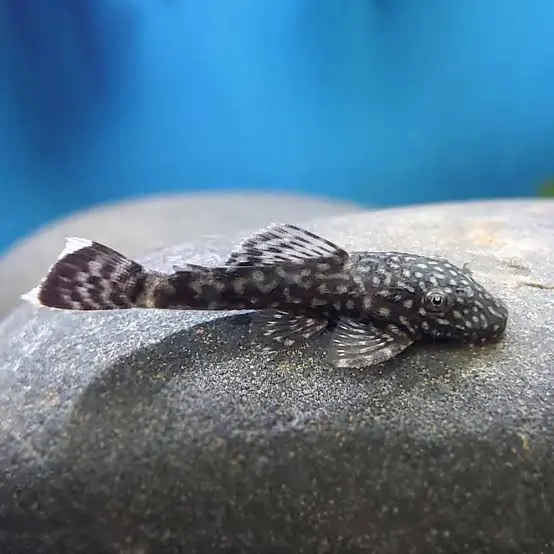
Understanding Acei Cichlids
Acei Cichlids are medium-sized fish, typically growing up to 6 inches in length. They are known for their vibrant colors and active swimming behavior.
These fish are generally peaceful but can become territorial, especially in smaller tanks. Understanding their natural habits and social structure can help you create a suitable community tank.
They thrive in groups, so it is advisable to keep them in schools of at least five to reduce aggression and stress levels. This social aspect is essential for their well-being and enhances their natural behaviors.
Ideal Tank Conditions
Creating the right environment for Acei Cichlids is vital for their health and compatibility with other fish. They prefer a tank with a sandy substrate, rocky caves, and plenty of open swimming space.
The water temperature should be maintained between 75°F and 82°F, with a pH level between 7.5 and 8.5. Good filtration and regular water changes are essential to keep the water clean and oxygenated.
These conditions not only support the health of Acei Cichlids but also provide a suitable habitat for their tank mates.
Fish to Avoid
Certain fish should be avoided when keeping Acei Cichlids due to their aggressive nature or differing habitat requirements. Avoid keeping them with overly aggressive cichlids like the Jaguar Cichlid or the Oscar.
Additionally, small fish that may be seen as prey, such as Guppies or Neon Tetras, should be excluded from the tank. It is crucial to avoid any species that may provoke territorial disputes or stress among the Acei Cichlids.
Introducing New Fish
When adding new fish to an aquarium with Acei Cichlids, it is essential to acclimate them properly. Start by floating the new fish in their bag in the tank for about 15-20 minutes to equalize the temperature.
Afterward, gradually introduce tank water into the bag over an hour before releasing the new fish. This process helps reduce stress and allows the fish to adjust to their new environment. Monitor the tank closely for any signs of aggression or stress during the initial introduction period.
Maintaining a Harmonious Tank
To maintain a peaceful aquarium, it is important to provide plenty of hiding spots and territories for all fish. Regular water changes and tank maintenance will help keep the environment stable and healthy.
Monitor the behavior of your fish regularly, and be prepared to separate any individuals that display excessive aggression. By ensuring a well-balanced community tank, you can enjoy the beauty of Acei Cichlids alongside their compatible tank mates.
Conclusion
Choosing the right tank mates for Acei Cichlids is crucial for creating a thriving aquarium. By understanding their needs and behaviors, you can select compatible species that enhance the beauty of your tank.
Remember to monitor the interactions between fish and maintain optimal tank conditions to ensure a peaceful environment.
With the right approach, you can enjoy a vibrant and harmonious community tank featuring stunning Acei Cichlids and their companions.

